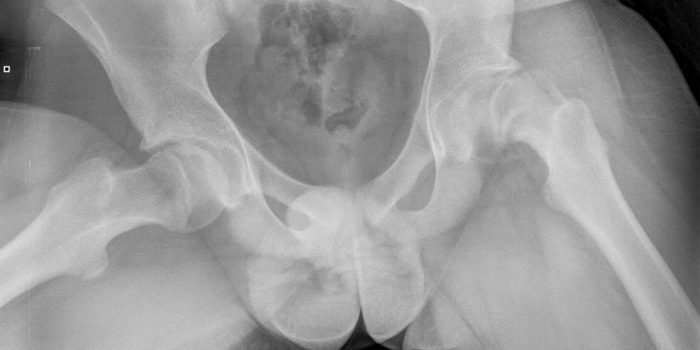A team of orthopedic surgeons from the Clinic for Orthopedy and Trauma, University Clinical Center Tuzla successfully performed surgery of proximal femoral epiphysiolysis or slipped proximal femoral epiphysis in a 14- year old male patient.
As the lead surgeon Prim.Dr. Nedim Smajić explained, the condition for which the patient underwent surgery is rare and occurs in 10:100 000 adolescents aged 10 to 17 years of age, more often in boys with adiposogenital constitution followed by an increase in weight.
” It is disorder of the epiphysis (the pineal gland) that causes the metaphysis to slip forward and upward compared to the epiphysis that remains in the acetabulum. It occurs due to the action of mechanical forces on the altered growth zone, and whose structure has already been disrupted, most often due to hormonal imbalance. The condition is manifested by pain, limited mobility and shortening of the extremities.” said dr. Smajić and added that surgery is the treatment option for proximal femoral epiphysiolysis.
This orthopedic surgery has rarely been performed in Bosnia and Herzegovina. Prim. Dr. Smajić also explained that is usual to make stabilization with one screw after manual withdrawal when trying to return the epiphysis in its place, which creates the risk of the epiphysis damage in the form of necrosis and chondrolysis due to damage of blood vessels that feed the epiphysis. “This surgery involved an osteotomy or cutting the bone in the trochanteric area at certain angles and two lines, in order to return the epiphysis to the position before removing, without manipulations that may endanger vascularization and cause possible damage of the epiphysis. With this surgical approach all described complications are reduced to a minimum.” he said.
For surgeons the preoperative procedure for this surgery requires thorough and accurate measurements of the angles at which the bone is cut in two lines to obtain the position of the upper femur and the ratio of hip joints after fixing the cut parts of the bone with a plate to avoid the postoperative gait disorders, deformities and pain.
The surgical team led by Prim. Dr. Nedim Smajić, orthopedic surgeon consisted of Dr. Mahmut Lelić, Dr. Mirza Mešanović, orthopedic surgeon, Dr. Izmir Sijerčić, anesthesiologist, Jasna Divković scrub nurse, and Nurdin Salkanović, anesthetist.







